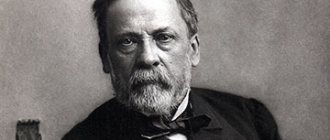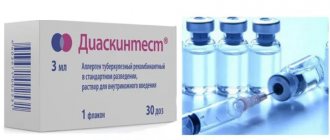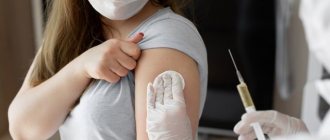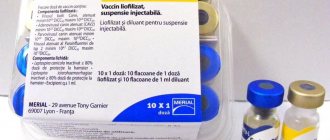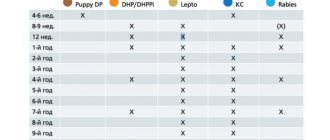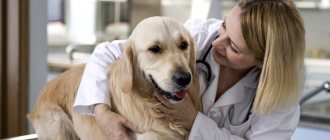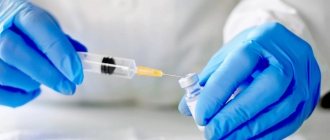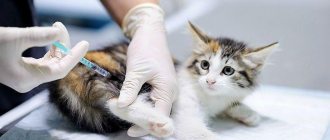Scientific goals Finding a vaccine against rabies, a disease with almost one hundred percent mortality rate.
Who is LOUIS PASTER and his assistant Emile Roux
Where is Paris, France
When from 1882 to 1885
How Pasteur spent years of painstaking research and was able to isolate the microorganisms that cause disease. To obtain a sample of the infection, he conducted experiments on animals.
Results In the 19th century, rabies was not uncommon - people became infected from sick dogs and wild animals. Louis Pasteur found an effective method of treatment.
How was the medicine created?
On July 6, 1885, Louis Pasteur found himself embroiled in a life-or-death battle. Nine-year-old Joseph Meister was brought to his laboratory from Alsace, 400 km from Paris. Two days earlier, Josef was severely bitten by a rabid dog - as many as 14 bites. Pasteur asked two doctors, Alfred Vulpin and Jacques Joseph Tranchet, to examine the boy. The doctors agreed that without treatment the patient was at risk of death.
Photo of the microscopic but deadly rabies virus under an electron microscope. The rabies virus infects a nerve cell and multiplies, infecting more and more cells. Without treatment, the infection reaches the brain and the patient dies.
Since childhood, Pasteur remembered the torment that people with rabies experienced. The virus, which is found in animal saliva, attacks the nervous system, spinal cord and brain over several weeks. His victims writhe in spasms and convulsions, they are thrown into a fever. They experience hallucinations - they see things that are not really there. They are unable to drink or eat and eventually fall into a coma. Death is coming soon.
For three years, Pasteur and his assistant, Emile Roux, had been trying to find a cure for rabies, but Pasteur believed that the work was far from complete. He tested the vaccine on several dogs, but has not yet conducted experiments on humans. Pasteur and Roux risked their lives working with rabid dogs and collecting their infected saliva.

Louis Pasteur in his laboratory. Pasteur understood that dirt, that is, microbes, could ruin all his experiments, so he insisted on impeccable cleanliness.
Over the course of ten intense days, Pasteur gave Joseph Meister 13 injections of rabies vaccine, gradually increasing the concentration. He waited and hoped that the vaccine would work. Joseph's body's reaction to the drug was decisive for Pasteur's career. The scientist understood that scientific evidence was on his side: rabies was not the first fatal disease he studied. In 1877, anthrax, a devastating plague, killed thousands of sheep across Europe.
Anthrax is dangerous to both livestock and people. During his experiments, Pasteur discovered that he could create weakened forms (strains) of viruses. If such a strain is introduced to a sheep, then its body is able to fight the disease. In 1881, Pasteur inoculated an entire flock of sheep with his new anthrax vaccine.
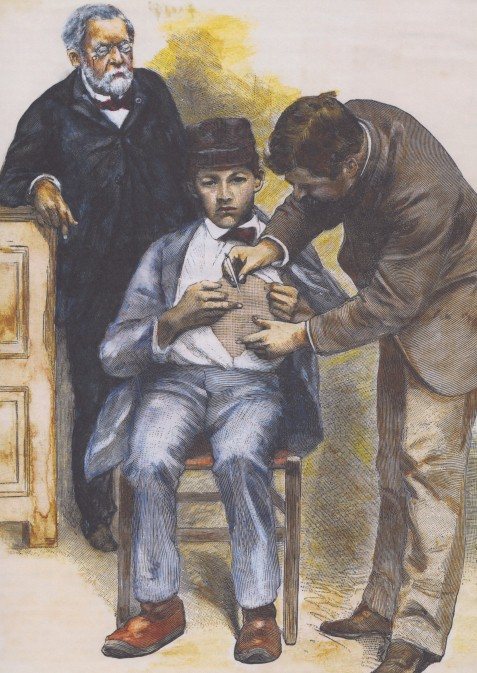
A doctor injects a young Frenchman with a fresh rabies vaccine. Pasteur watches the procedure, wondering if the medicine will help or if the patient will only get worse.
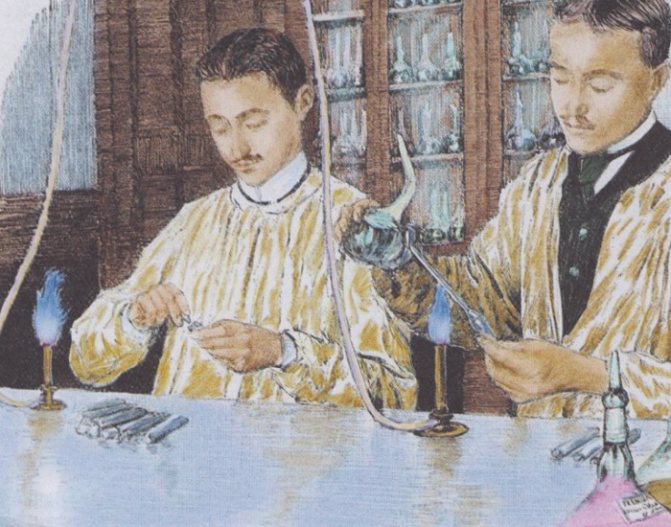
Pasteur's assistants are preparing vaccines. Once a successful vaccine was created, large quantities of it were needed to treat people and animals that might be infected.
Twenty days later he infected these sheep and another unvaccinated flock with anthrax virus. All unvaccinated sheep died. All vaccinated people survived. Pasteur used this experience to develop a vaccine against rabies. It turned out that the dried spinal cord of infected rabbits contained a weakened form of the virus.
Once in the animal's body, the weakened virus did not cause symptoms of rabies. On the contrary, the body began to produce special cells - antibodies that fought the disease!
Pasteur's powerful microscope allowed him to study bacteria, organisms that can cause disease. He divided them into different types and looked for ways to cope with those harmful to the body.
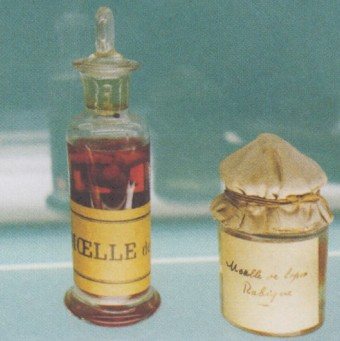
The glass flask on the left contains the spinal cord of a rabbit infected with rabies. Pasteur weakened the virus by exposing it to air and then injecting it into patients.
It was thanks to this that the treatment of young Joseph Meister was successful. He recovered and returned home. Pasteur became famous, and crowds of sick people flocked to Paris. From October 1885 to December 1886, Pasteur and his colleagues vaccinated 2,682 people suspected of having rabies. 98% of them survived. Josef has grown up. During World War I, he served in the army and then worked as a gatekeeper at the Pasteur Institute, the main research center for microbiology and infectious diseases of the day.
PIONEERS OF VACCINATION: LOUIS PASTER AND RABIES
Pasteur built his reputation on the rabies vaccine. He owes his creation largely to his employees. However, this vaccine had to be quickly abandoned because it was very dangerous.
Well, who didn’t shed a tear when they first heard the story of little Joseph Meister, saved from rabies by the great Pasteur! Oh! This heroic mother from Alsace goes to Paris to beg a scientist to save her child, who has been bitten by a rabid dog. And this benefactor of humanity, snatching a child from the clutches of death! Hallelujah! Rabies has been defeated. Glory to the discoverer of vaccination! This story is as beautiful as the ancient tales, except that it is too beautiful to be one hundred percent true. Taking a closer look at Pasteur, one can understand that a more complex and less flattering truth is hidden behind him. Here is the true story of the discovery of the rabies vaccine by Louis Pasteur. In 1881, after developing an anthrax vaccine for sheep and cows with his assistant Emile Roux, the chemist (let's not forget that he was not a doctor) decides to create a vaccine for people. He chooses rabies, which causes many deaths and is also fatal to many species of animals that will be useful to him for his experiments. Another huge advantage of this evil is its very long incubation. A month may pass between the bite and the appearance of the first symptoms. Thus, vaccination immediately after a bite can sufficiently strengthen the immune system before a massive attack by the virus. This fundamental delay is not the discovery of Pasteur, but of a veterinarian from Lyon named Pierre-Victor Galtier. He was even the first to create immunity against rabies for sheep. But who remembers this scientist? Appropriated? Pasteur, who was no angel at all, made every effort to criticize the work of poor Galtier, all in order to ultimately appropriate his works for himself. Well, he had such a habit! To reduce the virulence of the virus and use it as a vaccine, Pasteur decides to infect the monkeys by transferring infected tissue from one to another. Ultimately this turns out to be the wrong path. Meanwhile, Emile Roux is exploring a second method: he takes infected tissue from a sick animal, which he then artificially ages under oxygen. After two weeks, the infected tissue becomes unable to kill the dog. Seeing the effectiveness of this method, Louis Pasteur easily appropriates it for himself. Yes, he is improving it and testing its effectiveness on many dogs. But does this work on people? She dies at 10:30 a.m. on May 2, 1885. A patient at Necker Hospital with symptoms typical of rabies is given an injection of the Pasteur-Roux vaccine. He is recovering. But it soon turns out that he... did not have rabies. The second patient is an 11-year-old girl named Julie. Unfortunately, vaccination is carried out a month and a half after the bite, which means that time is lost. She dies the day after the first injection. There is complete silence about this failure. Here is what Pasteur notes in his laboratory journal: “Rabies - human rabies - 11-year-old girl from Saint-Denis. June 22 - A little girl, a charming child (named Julie Antoinette Pougon), about ten years old, bitten six weeks ago, but the exact day is unknown, on the upper lip (while trying to get her little dog out from under the bed). I was warned by D. Bomets, who in turn was warned by Dr. Leroy de Barre this morning, June 22nd. I'm going to Saint Denis. Arrival at 6 am. The child has been feeling unwell for two days now and has a headache. I enter the hospital on the morning of the 22nd. I examine her and, together with Dr. Leroy de Barre, I come to the conclusion that she is severely affected by rabies. At my request, Mr. Leroy injects bone marrow diluted in sterilized broth from an infected rabbit under the skin below the lower ribs with a Pravas1 syringe, one on each side (bone marrow after 7 days). At midnight, a new vaccination from a test tube with bone marrow dated June 17 - 5-day preservation. June 23. I examine the baby at 10 o'clock in the morning. She dies at 10:30 am. The symptoms of expectoration increased very quickly.” Three weeks later, on July 16, 1885, young Alsatian shepherd Joseph Meister arrives at Pasteur's laboratory, accompanied by his mother Angelique and the owner of the allegedly rabid dog, grocer Theodor Vonne. The child has 14 bites on his leg. Pasteur hesitates. He explains to his mother that there are still doubts about the effectiveness of the vaccine. But she insists. Faced with such despair from his mother, Louis Pasteur agrees. Since he is not a doctor himself, he instructs doctors Vulpian and Grancher to administer the injections. Criminal risk Believing that it is too early to use the vaccine on humans, Emile Roux chooses not to participate in this vaccination session. So, baby Meister first receives ten injections - one per day with increasing doses of the vaccine. The boy reacts well. There are no symptoms of rabies. He's saved! The vaccine is effective! But, anticipating any subsequent challenge to his actions, Pasteur takes a huge risk that today would seem criminal. He demands that two doctors literally infect little Josef with rabies to prove the vaccine's effectiveness. He would later write to his son-in-law: “My dear Rene. I believe great things are coming. Josef Meister leaves the laboratory. The last three vaccinations left pink, diffuse, rather large, and flaccid marks under the skin. The impact is increasing as we approach the final vaccination on Thursday 16 July.” Weeks pass and Meister shows no symptoms of rabies. The effectiveness of the vaccine has been confirmed. Encouraged by this first success, Pasteur immediately began vaccinating. People come from all over France and even all over Europe to get vaccinated by the great man. On November 2, 1886, Pasteur announced that he had cured 2,490 people. And in order to be able to accept everyone, he founded his own institute. A dozen deadly failures However, his vaccine doesn't always work. He records a dozen fatal failures, prompting him to improve the effectiveness of his vaccine, but at the risk of transmitting the disease. This is what happened to a boy named Jules Rouyer, who was bitten by a dog in October 1886. He dies a few days after treatment. The official autopsy report, signed by the dean of the Faculty of Paris, lists the cause of death as kidney injury. Sew it up, there's nothing else to see! Further investigation will reveal that the dean was careful not to note in his report that Jules' brain tissue was contaminated from rabbits that died of paralytic rabies. However, this form of rabies was characteristic of the Pasteur vaccine. This clearly indicated that Jules died of rabies, transmitted not from a dog bite, but from the Pasteur vaccine, the virulence of which was not sufficiently reduced! Half a century later, Pasteur’s nephew will explain that the dean of the medical faculty kept silent for the sole purpose of not losing public trust in scientific medicine and vaccination. Not certain Returning to Joseph Meister, it is impossible to say for sure that the dog that bit him was infected with rabies. The presence of straw and pieces of wood in her stomach does not prove anything. And some are surprised that not a single study of the animal's brain has been done to confirm its disease. Years later, Dr. Grancher, who administered injections to little Meister, admitted: “Pasteur was not careful enough in medical matters. He expressed no doubt about the possibility of partial failure of his rabies vaccine. If he were a doctor, he would instinctively take precautions to anticipate the possibility of accidental mishaps." Ultimately, Pasteur's vaccine was quickly abandoned because it was not completely safe. Not only could it transmit rabies, but it too often caused allergic reactions and even encephalitis. In 1908, Claudio Fermi created an effective and harmless vaccine using viruses whose virulence was weakened by phenol. Of course, Louis Pasteur, the “benefactor of humanity,” remains an outstanding scientist, but not because of his work related to rabies vaccination.
Translation by Alexander PARKHOMENKO
1 - Charles-Gabriel Pravas - French surgeon, one of the inventors of the modern syringe.
28.10.2020
Frédéric LEVINO Le Point
Louis Pasteur's contributions to science
- Proved that most infectious diseases are caused by the smallest living creatures, microorganisms;
- Created vaccines to treat rabies, anthrax and avian cholera;
- He developed a method of pasteurization - disinfection of liquids by heating.

Pasteur vaccinates sheep, protecting them from anthrax. After 10 years, half a million cows and 3.5 million sheep were vaccinated against the disease.
Chronology of events
At the age of twenty, Pasteur was able to pass the exams only the second time, but later he made several breakthroughs in science and medicine.
- 1848 Makes a revolution in ideas about the microscopic structure of molecules in crystals.
- 1859 Refutes the popular belief about the spontaneous generation of life from thin air.
- 1863 Proposes the technology of pasteurization - long-term one-time heating of products (as a result, microbes die in them).
- 1865 Discovers two types of bacteria that cause silkworm diseases. Saves the French silk industry.
- 1877 Begins research into anthrax, a disease dangerous to animals and humans.
- 1879 Develops the first vaccine against avian cholera.
- 1884 First to successfully vaccinate dogs against rabies.
- 1885 Joseph Meister becomes the first person cured of rabies in Pasteur's laboratory.
- 1886 Nineteen people from Russia, bitten by a rabid wolf, visit Pasteur and are successfully cured.
- 1888 The Pasteur Institute opens, conducting important research into the fight against infections.
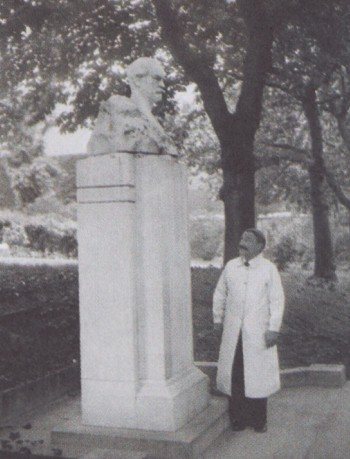
An adult Joseph Meister next to the Louis Pasteur monument in 1935. The Pasteur Institute, where Meister worked, is today a powerful scientific organization with 24 branches around the world.
Share link
Education of Louis Pasteur
Despite poor health and lack of funds, Louis Pasteur successfully completed his studies, first at college in Arbois and then in Besançon. Having completed the course here with a bachelor's degree, he entered in 1843 the École Normale Supérieure, which trained teachers for secondary schools.
Louis was particularly interested in chemistry and physics. At school he listened to Balar's lectures. And he went to listen to the famous chemist Jean Baptiste Dumas at the Sorbonne. Pasteur was captivated by work in the laboratory. In his enthusiasm for experiments, he often forgot about rest.
Success in learning
After graduating from school in 1847, Louis Pasteur passed the exams for the title of associate professor of physical sciences. A year later he defended his doctoral dissertation.
At that time, Pasteur was not yet twenty-six years old, but he had already gained fame for his research in the field of crystal structure. The young scientist gave an answer to a question that had remained unresolved before him, despite the efforts of many leading scientists.
Founder of stereochemistry
He discovered the reason for the unequal influence of a beam of polarized light on crystals of organic substances. This outstanding discovery later led to the emergence of stereochemistry - the science of the spatial arrangement of atoms in molecules.
Also in 1848, Pasteur became an associate professor of physics in Dijon. Three months later he takes up a new position as associate professor of chemistry in Strasbourg. Pasteur took an active part in the revolution of 1848 and even joined the National Guard.
